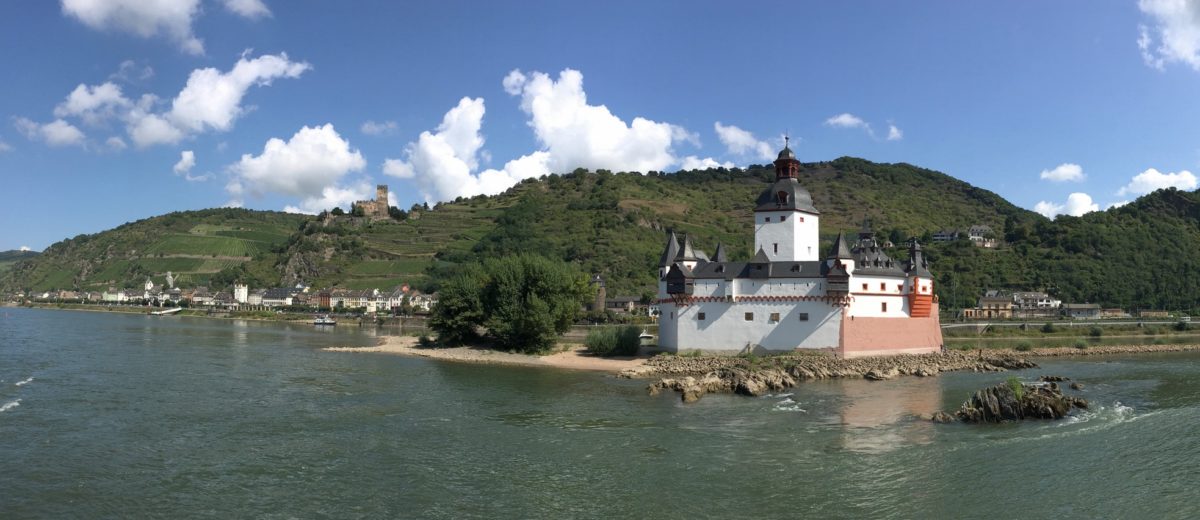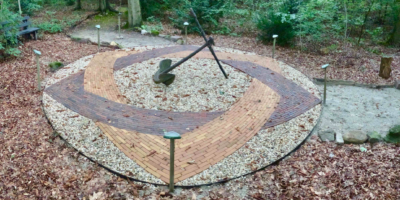The two great European rivers, the Rhine and the Danube, have been a natural barrier across the continent through the centuries from the Black Sea to the North Sea. They formed the north-eastern frontier of the Roman empire, safeguarding ‘civilisation’ from ‘barbarism’, until its disintegration early in the fifth century.
As guests of a group of Kiwi travellers, my wife and I are enjoying a ‘trip of a lifetime’ from Amsterdam to Budapest, down the Rhine and the Danube. The right bank, seen from our river cruiser, was under ‘civilised’ Roman rule; the left bank was ‘wild’ barbarian territory. At all costs, ‘they’ had to be kept out.
A line of frontier fortifications called the Limes Germanicus (Germanic frontier), with at least 60 forts and 900 watchtowers, stretched almost 600 kilometres from the North Sea outlet of the Rhine in Holland to near Regensburg on the Danube. The limes continued eastward along the Danube to the Black Sea under various names: Limes Norici, Limes Pannonicus, Limes Transalutanus and Limes Moesiae.
Then on New Year’s Eve, 406, things began to change. Somehow–some say the river must have been frozen–a mixed group of barbarians poured across the Rhine near Mainz and celebrated the new year with a rampage of destruction leading to the collapse of Roman order in northern Gaul. The Rhine crossing became a signal for further migration of various germanic tribes westward and southward.
Disturbing
Jerome, the early church father, had just finished his Latin translation of the Bible (The Vulgate) in Bethlehem when he heard the disturbing news of this barbarian invasion. His letter recounting the events listed the tribes involved (including Vandals, Saxons, Burgundians, Alemanni and more) and the pillaged cities (Mainz, Worms, Rheims, Amiens, Strasbourg….). He could see the beginning of the end of the empire.
Yet it was also the beginning of the conversion of the invading tribes and the next stage in the making of Europe. Over the next four centuries, the Irish, who in Jerome’s day had not yet even heard the gospel, pioneered the evangelisation of this part of Europe. Wave after wave of monks established monastery after monastery, the building blocks of the emerging order. They became known as ‘teachers of nations and disciplers of kings’. After the Celts came the Benedictines, many of whose monasteries are still to be seen along this watery-highway.
The Rhine thus ceased being a border and became the main artery first of the Kingdom of the Franks, then of the so-called Holy Roman Empire. What used to be a fortified defensive barrier was now seen as a means of communication, transport and cooperation. The spread of Christianity along this route is amply evident for river tourists in the profusion of churches–Romanesque, Gothic and Baroque–standing as silent witnesses along both banks. Jerome probably never imagined his name would one day be revered among these formerly barbaric peoples.
Connecting
Charlemagne, the first Holy Roman Emperor, dreamed of connecting the Rhine and the Danube by canal, and thus linking the North Sea and the Black Sea. That dream would take over a thousand years to be realised. Even then, the Ludwig-Donau-Canal, completed in 1846, was narrow, had many locks and proved uneconomic. Damaged during World War II, it was finally abandoned in 1950.
Our river-cruiser has just negotiated the much larger Rhine–Main–Danube Canal, completed only in 1992. An amazing water-stairway with some 16 locks, some 25 metres high, lifts the boat 170 metres above starting level, before dropping again to the level of the Danube. Since the completion of this canal and the end of the Balkan wars, eleven nations from Romania to the Netherlands have been linked via a 3000km waterway, another reminder of the interconnectedness and interdependence of the European peoples.
On this trip, the words of atheist Richard Dawkins have often come to my mind: ‘you cannot understand Europe without understanding Christianity and the Bible’. Stopovers in Cologne, Würzburg, Bamberg, Nuremberg, Regensburg, Passau, Melk and Vienna among others have exposed us to layer upon layer of Christian history which laid a common foundation for the European peoples.
Not that the story is all positive however. Reminders of the dark chapters of church history have been plentiful on this trip: the Crusades, persecution of Jews and religious wars. The hypocrisy and greed of many church leaders have understandably provoked disdain in the comments of our guides.
History has never been neat and tidy. Hypocrisy and greed lurk in each of our hearts. But the same gospel that transformed a defensive border into a communications highway can surely continue to shape history in ways that, like Jerome, we have never imagined.
Till next week,



